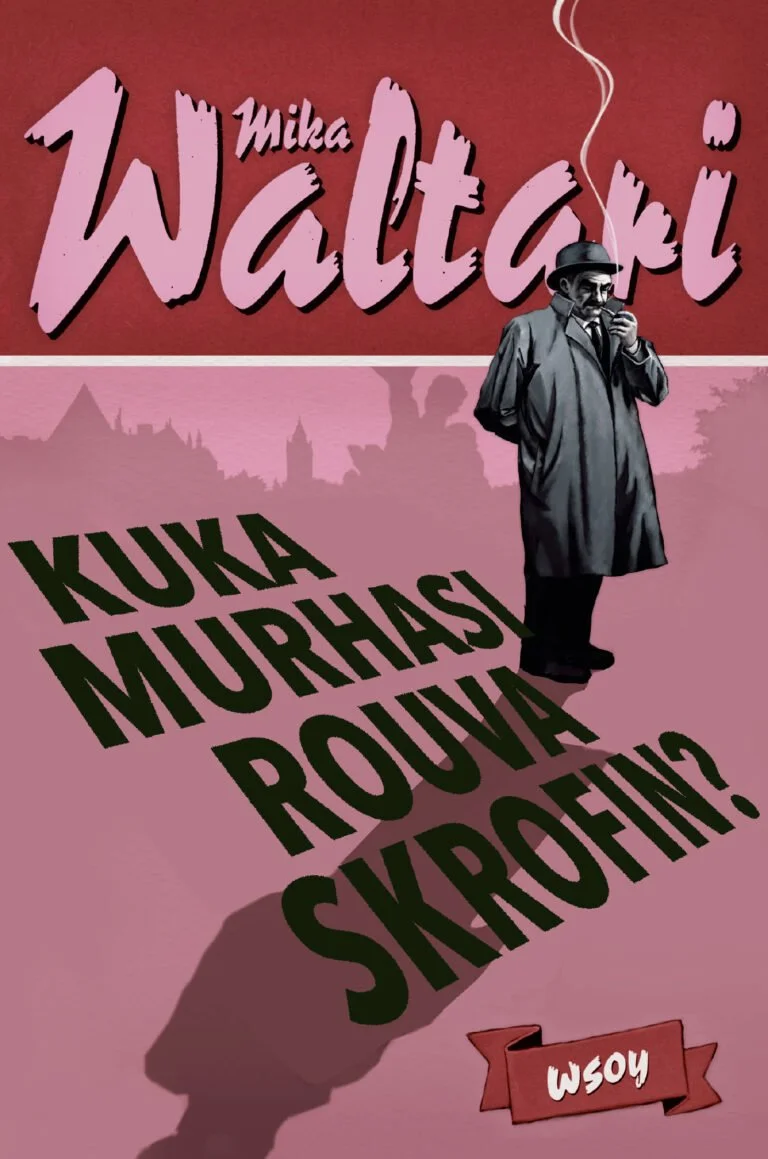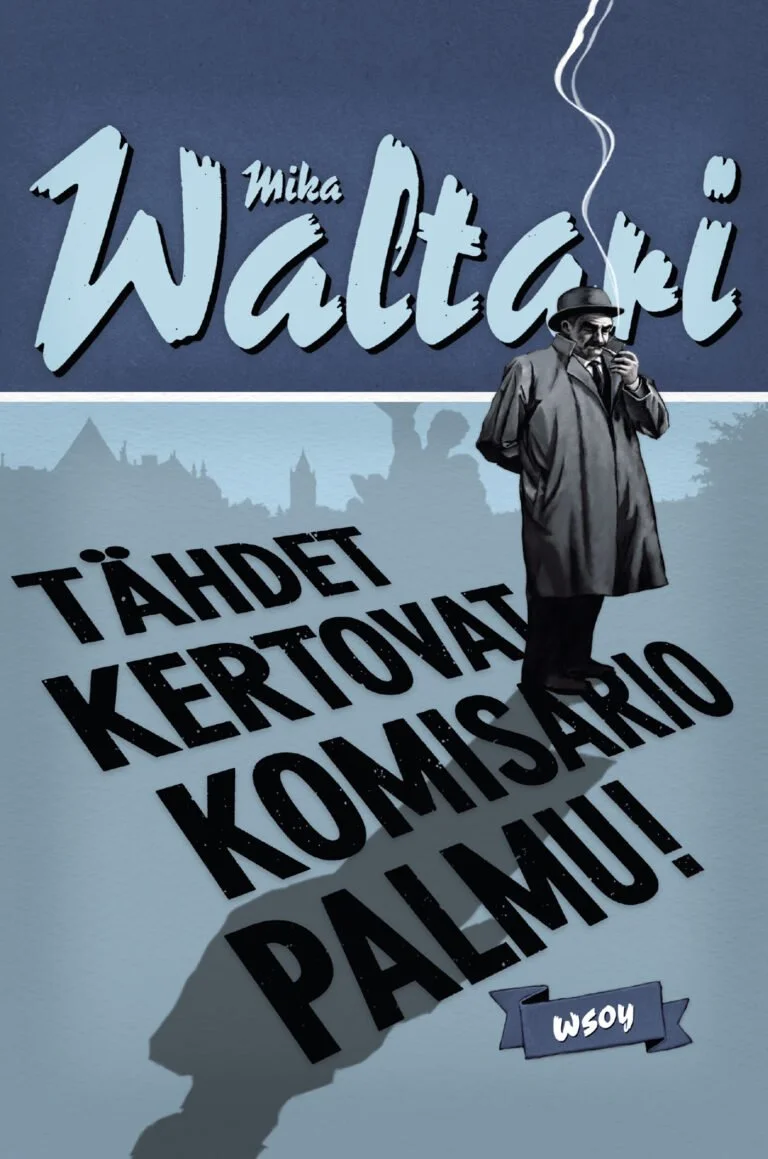The INSPECTOR PALMU series
by Mika Waltari
WHO MURDERED MRS SKROF?
Kuka murhasi rouva Skrofin?, Otava 1939, 237pp
The first detective novel written by Mika Waltari!
Winner of Finland’s candidature for Scandinavian Detective Novel Competition 1938!
Nominated as the Best Finnish Detective Novel by the Finnish Whodunit society 2014!
A cult classic in Finland!
Inspector Palmu, a gruff 60-year-old working for the Helsinki Police Department, is Finland’s most loved detective character. In this biting murder mystery, he sets out to solve the murder of Mrs. Skrof, a rich and unpopular widow found dead in her Helsinki flat following a gas leak.
Although his junior detective, the book’s narrator, thinks it was an accident, Inspector Palmu is not so sure. His list of suspects includes Kirsti, Mrs. Skrof’s stepdaughter; Kalle, an acrobatic pilot; Kurt, a surrealist painter; and Pastor Mustapää, the charismatic leader of an extreme Protestant sect. Inspector Palmu visits each of his suspects in turn in an attempt to piece together an account of what really happened to Mrs. Skrof.
Offering readers a chance to explore a pre-war Helsinki, Mika Waltari’s much-loved murder mystery has earned a cult classic status in Finland. The relationship between Inspector Palmu — with a weakness for damsels in distress—and his junior has been likened to Doyle’s Watson and Holmes.
Who Murdered Mrs. Skrof? is the first book in a series that follows the much-loved Inspector Palmu and includes Inspector Palmu’s Mistake and It is Written in the Stars, Inspector Palmu!
Who Murdered Mrs. Skrof? was made into a film in 1961 by Matti Kassila. The work has also been adapted for live stage by Joel Elstelä.
INSPECTOR PALMU’S MISTAKE
Komisario Palmun erehdys, WSOY 1941, 272pp
The second detective novel written by Mika Waltari!
Adapted into film in 1960!
#3 position in The Best Finnish Crime Novel vote by the Finnish Whodunit Society in 1994!
Live stage adaptation in 2016!
A cult classic in Finland!
Bruno Rygsack, a rich, young man who is due to inherit a huge fortune, is found dead in a bath tub following a dinner party. Inspector Palmu doesn’t believe that he slipped on a bar of soap, instead suspecting that he may have been murdered. The more Inspector Palmu probes, the more hostile the party guests become.
It soon emerges that the party was in fact a crime-themed party, and the night in question involved theft, forgery and poison. Inspector Palmu, along with his partners Virta and Detective Kopp, take it upon themselves to solve the mystery, interrogating a wonderfully diverse assortment of characters.
Inspector Palmu’s Mistake is characteristically morbid and a bit philosophical. It is by no means a straightforward whodunit, rather it is a story that takes many twists and turns and keeps readers guessing until the very last page.
Inspector Palmu’s Mistake has become an enduring modern classic. It was turned into a film in 1960 by Matti Kassila. The film was voted the best Finnish film of all time by the Finnish Film Critics and Yle in 2012, and it was adapted for live stage in 2016 by Joel Elstelä.
IT’S WRITTEN IN THE STARS, INSPECTOR PALMU!
Tähdet kertovat, komisario Palmu, WSOY 1969, 254pp
The third detective novel written by Mika Waltari!
A cult classic in Finland!
Made into a popular film in 1962, and published in book form in 1969!
Miss Kaino Pelkonen is out walking her dog when she stumbles across a body. The press immediately rush to the scene. That’s when Inspector Palmu and his team turn up, tasked with solving the crime in the midst of all the mayhem.
It is Written in the Stars, Inspector Palmu! is the final installment in Mika Waltari’s Inspector Palmu crime series, featuring the much-loved, gruff sixty-year-old inspector, who has a the unique ability to see through suspicious behaviour and identify the innocent.
It is Written in the Stars, Inspector Palmu! was initially a film script made into a popular film by Matti Kassila in 1962, and published in book form only in 1969.
PREVIOUSLY PUBLISHED IN: Finnish: Otava, book 1 (orig.) & WSOY, books 2-3 (orig.)
Translations in: Bulgarian, Czech, Danish, Dutch, Estonian, French, German, Greek, Hungarian, Icelandic, Italian, Norwegian, Polish, Spanish, Swedish.
Ask for the availability of rights in your territory!
Materials available: Full Finnish pdf (books 1-3)
PRAISE FOR INSPECTOR PALMU SERIES:
“It is interesting to note how Waltari uses a Watsonesque narrator - a detective’s assistant who meticulously explains his superior’s investigations, but always falls a little short of his brilliant deductive powers.”
Author photo © Suomi Filmin taidekuvaamo / WSOY
Mika Waltari
Mika Waltari’s (1908-1979) literary genius emerged early on. Already as a 21-year-old he was a prominent figure in the Finnish literary movement known as the Tulenkantajat. His first novel Grand illusion (Suuri illusioni, 1928) depicted the lost generation à la Fitzgerald following WWI and became a huge success in Finland with translations into several foreign languages.
Waltari is best known for his grand historical novels. The Egyptian (Sinuhe egyptiläinen, 1945) is a projection of the writer’s own sense of post-war pessimism onto the life of an Egyptian physician living in the 14th Century BCE. The novel rapidly became an international bestseller. The Egyptian was followed by an array of historical novels set in various epochs, all of them depicting the problematic lot of the individual in an age of immense historic change. All are imbued with Waltari’s profound, humanistic view of life.
Unprejudiced, and skilled at adaptation, Waltari experimented successfully with most existing literary genres: his pen yielded poetry, fables, stage plays, travelogues, essays, horror stories, short stories, novellas.
He was the first notable Finnish practitioner of detective fiction: his three Inspector Palmu novels have become enduring cult classics in Finland, and adapted into film and onto live stage.
In Waltari’s hands, writing detective stories became almost like a literary exercise that enabled him to showcase his skillful and sometimes even ironic play with literary forms and conventions.




